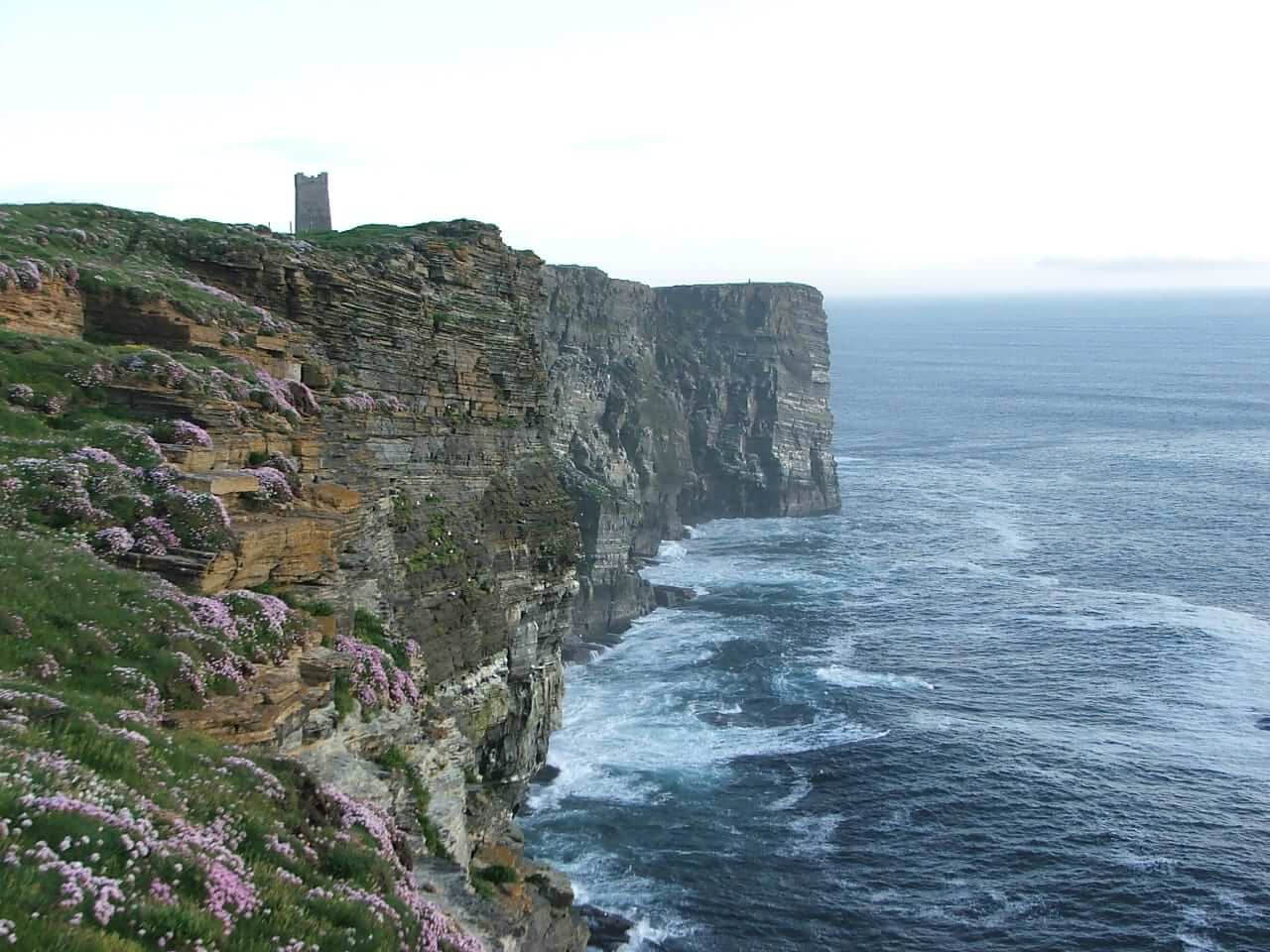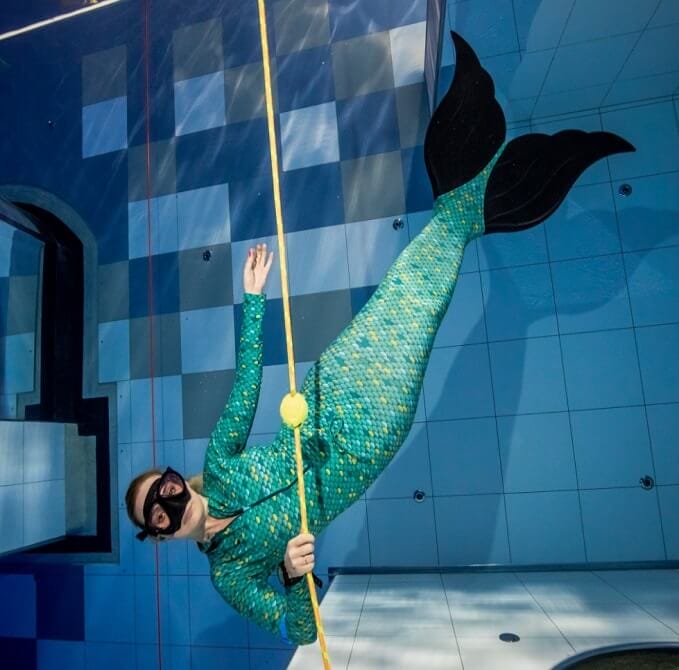Part I description of the site (Part II in preparation – description of the wrecks)
Skape Flow is a vast sea bay and actually a large space between islands north of Scotland or Orkney, where an interned German fleet was sunk after World War I on June 21, 1919. At a depth of between twenty-something and forty-something meters lie dozens of wrecks of German warships. From destroyers to cruisers to battleships. This was the largest “sinking” of a fleet in human history. Even the sinking of the French fleet off the roadstead of Toulon during World War II was less.
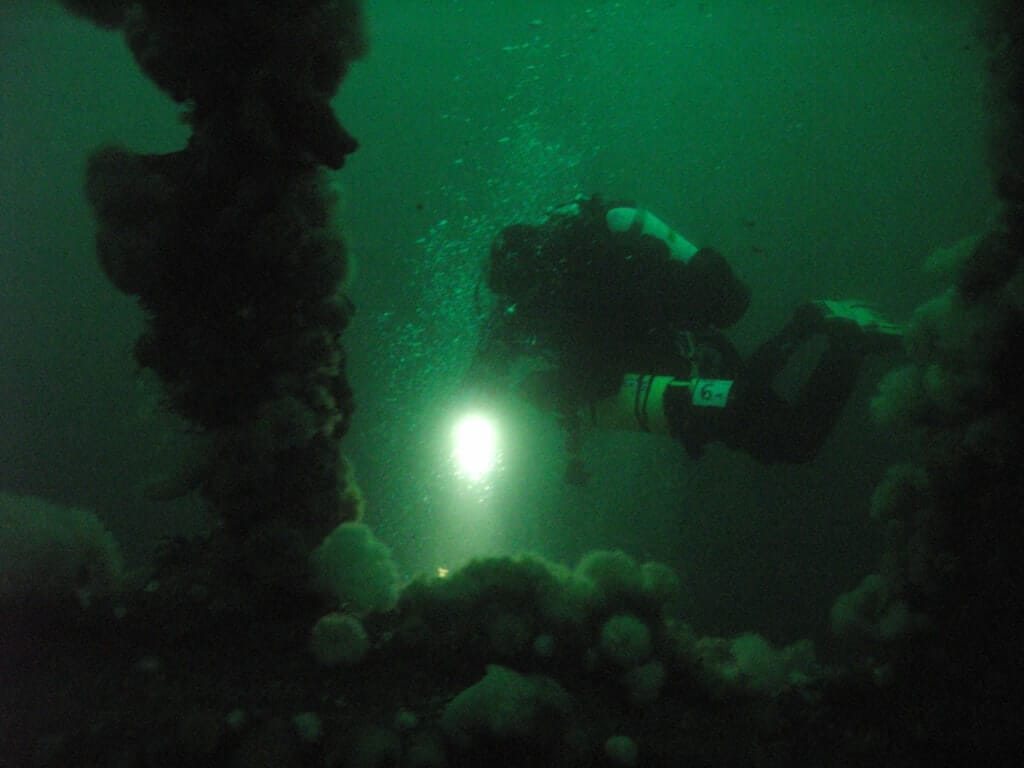
Toulon Wreck List for comparison:
Three battleships, four heavy and three light cruisers, 30 destroyers and torpedo boats, a seaplane carrier, 16 submarines, 18 escort carriers. This wreck site became the filming location for Jacques Cousteau’s underwater film “Shipwrecks”
List of Scapa Flow wrecks in Part II of the article.
Scapa Flow has not been lucky enough to have a filmmaker as famous as the wrecks of Toulon (Jacques Cousteau) but what is under the water is truly impressive.
The description of the Scapa Flow dive sounds like a fairy tale. Somewhere on the edge of the world old wrecks plunged into dark water. All around are islands with lots of memorabilia from the First and Second World Wars. Nice people, good food – nice pubs with British cider (if you like it) and, of course, beer for lovers of the drink.

The circumstances alone surrounding how the German fleet turned into a wrecking yard is very interesting. After World War I, the German fleet was interned and transferred to the care of Great Britain. She was stationed with skeleton crews just on Skapa Flow. The allies of the anti-German coalition were to share this fleet, which was not exactly to the taste of the British, since the additional ships would have clearly increased the potential of the Italian and French navies; only marginally increasing the Royal Navy’s capabilities. Therefore, it seems that with some “agreement of the parties” one day the Germans decided to open the bottom valves of their ships simultaneously. This happened at a time when most of the US Navy units stationed there “accidentally” went on maneuvers outside the base, so the response to the Germans’ actions was delayed and only a few ships were saved. Most went down.
Getting to Scapa Flow can look two different ways. If you are in a hurry, you can choose a plane from Poland to Edinburgh and then a plane to Orkney, or in a slightly budget version from Edinburgh already by car to the north of England and by ferry to Orkney. The more expedition-oriented version is simply the version where we go by car from Poland through Germany, France, then through the Eurotunnel (forty meters below sea level, then all the way across the UK to northern Scotland and by ferry to Orkney. The route itself to the north of Scotland and then ferrying yourself to Orkney is an amazing adventure, beautiful landscapes, lakes with the mysterious name of loch in their names. Well, and as the icing on the cake, a few kilometers away from the abandoned-looking ferry landing, there is an iconic cafe where a super retired woman from London moved to the end of the world after selling her apartment to live quietly in beautiful landscapes, serve coffee sometimes really at home and mark on a world map with pins where her next customers come from. There were quite a few pins, the coffee was good, the lady was very nice, an amazing place to wait for the ferry to Orkney.
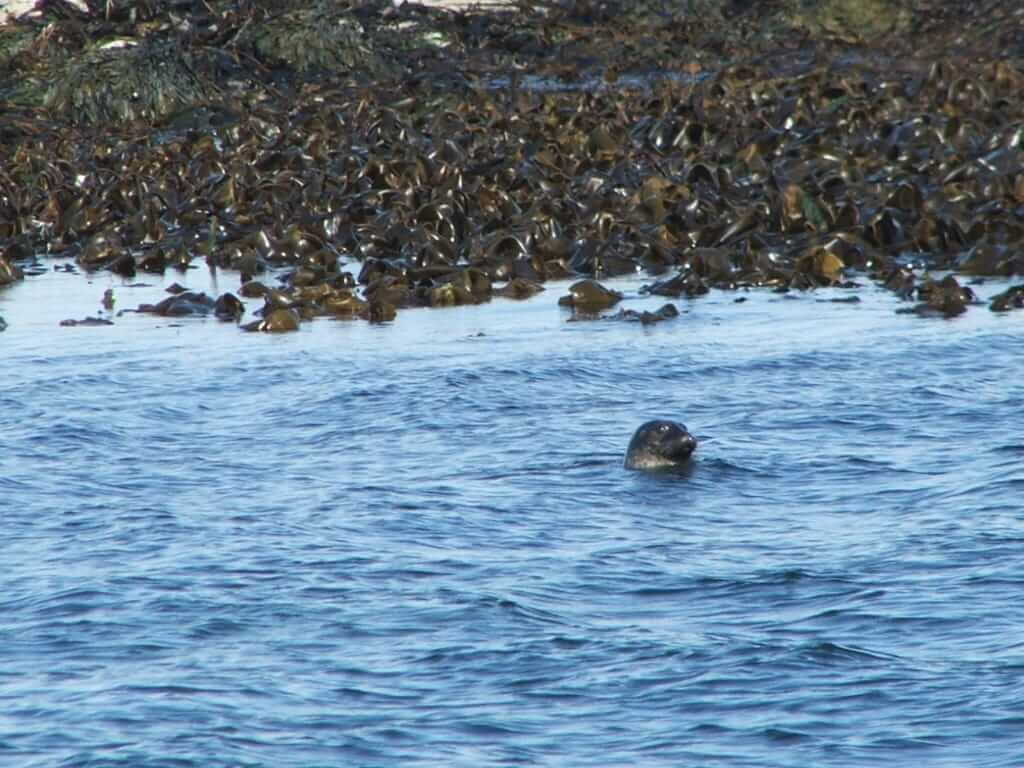
After ferrying from the ferry dock, we still have quite a way to go through the causeway-connected islands to the harbor on the bay, where we embark on the cruise ship that will be our home for the next few days. On this stateroom we are supposed to sleep, eat and dive from it. The Orkney region is strong tidal waters, so we hit a very strong tide upon arrival and the deck of our ship is hen somewhere down below. Four-meter ladders in the port’s vertical concrete walls lead to it. We have to go down there ourselves and transport all the equipment. Completely exhausted, we wonder what to do with the equipment next. Where to leave it, but looking at other such ships, where everything lies abandoned on deck including beautiful photographic equipment we conclude that on Scapa Flow as in other such island locations nothing gets lost we leave everything on deck and go to sleep.
The boat on which we sleep is chartered for weekly stays thanks to which it earns money not only on weekends but also during the week, which we wish for Polish dive boats. It is an old fishing boat converted into a Safari Boat however there are no double cabins with bathrooms. In fact, there is one space behind the descent somewhere sleeping six people and a three-person forp. The bathroom is on the upper deck and leaves a little to be desired. Everything is heated by an oil furnace in the descent, which provides both air circulation so ventilation and some heat. Everything is permeated with the smell of burning oil, moisture and mold.
In the morning, breakfast of very simple products, prepared in part by the crew. The crew consists of the skipper and his helper – a typical ship’s boy for everything. But overall, it works. I’m thinking of the 12-person manned Egyptian safari boats. In the morning after breakfast we set sail for the dives, on board the cylinders are waiting to be filled, when there is a break between dives to fill the cylinders, we reach land and go for a tour. Then we sail for a second dive and return to port in the afternoon. Dinner at some neighborhood pub or other fast food bar where they sell a specialty not only of the area, namely Fish and Chips.
The dives are fairly easy but have their own characteristics. Easy because we reach the fixed lowering lines descending to the wreck, and on the other hand, the wrecks are powerful and navigating them requires concentration to make sure you find your own lowering line Requires some focus and the use of certain patents related to knowing where to return.
The bottom at the dive sites is between thirty-some and forty-some meters deep, so the hulls of the wrecks are actually a little shallower. All the sinking ships behaved in a similar way. That is, destroyers stand on an even keel; cruisers lie on their side; and all battleships lie upside down. Straight on these several meters during the sinking, the weight of the main artillery caused the battleships to make a mushroom before they sank to the bottom.
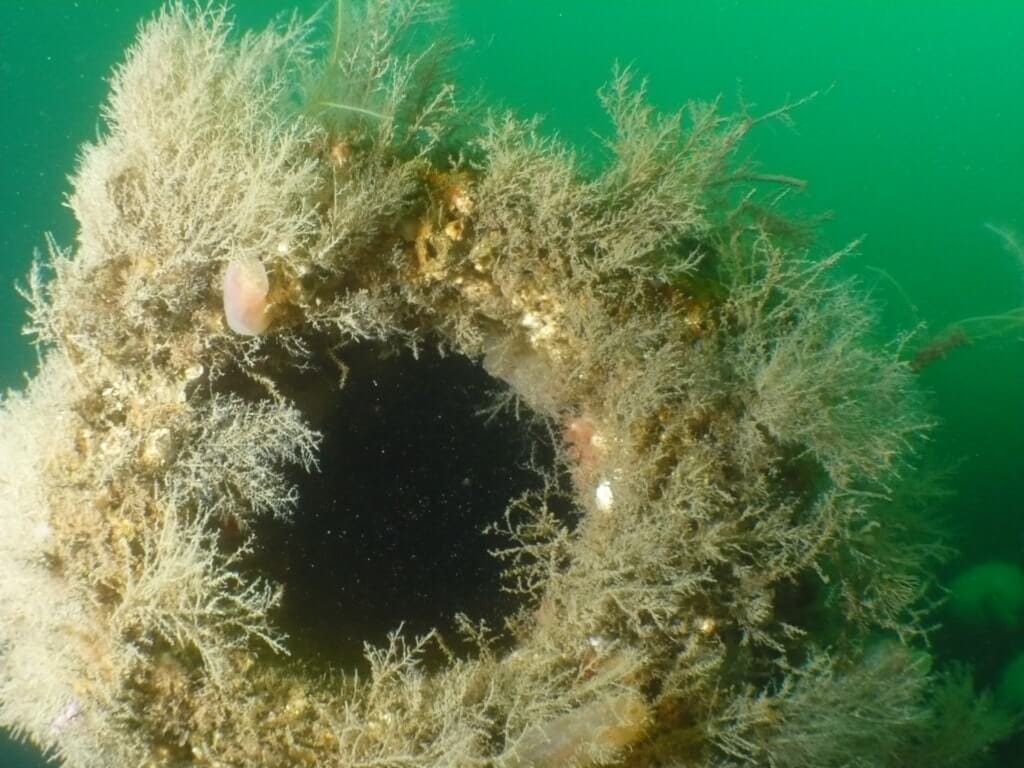
Unfortunately, the wrecks are scavenged of bolts, top of engines, shafts. All that was made of more noble metals or very noble steel was mined. If one read a book about the man who bought the fleet, one could read how in the period after World War II but also in the interwar period wrecks were pulled out and more valuable elements were extracted from the wrecks.
The wrecks are amazing, although the visibility in Scape Flow Bay itself is not sensational. Visibility of six/eight meters allowing you to dive without problems and at the same time not see the enormity of the wrecks. One simply cruises along the mass of metal admiring some small elements, but cannot form a picture of the whole. In this respect, this wreck site is clearly weaker than the wrecks near Vis or LagunaTruk.
A week of diving on Skape Flow allows you to visit most of the more spectacular, or better preserved, wrecks and at the same time gives you time to explore the area. The shore is dotted with former military installations and the remains of wrecks. Mighty screws, rudders, artillery parts just lie on the shore, so between dives, the dive boat takes you to the more spectacular places, but of course you can also take a trip on your own from the harbor and see some of the more interesting pieces of equipment abandoned on shore
The dives in practice are decompression-free, although if one wants to plan dives with entry into the interior of wrecks, double sets plus nitrox come in handy due to both equipment redundancy and decompression requirements.
That is, the equipment needed is either typical recreation or twin or sidemount sets plus stage with deco gases.
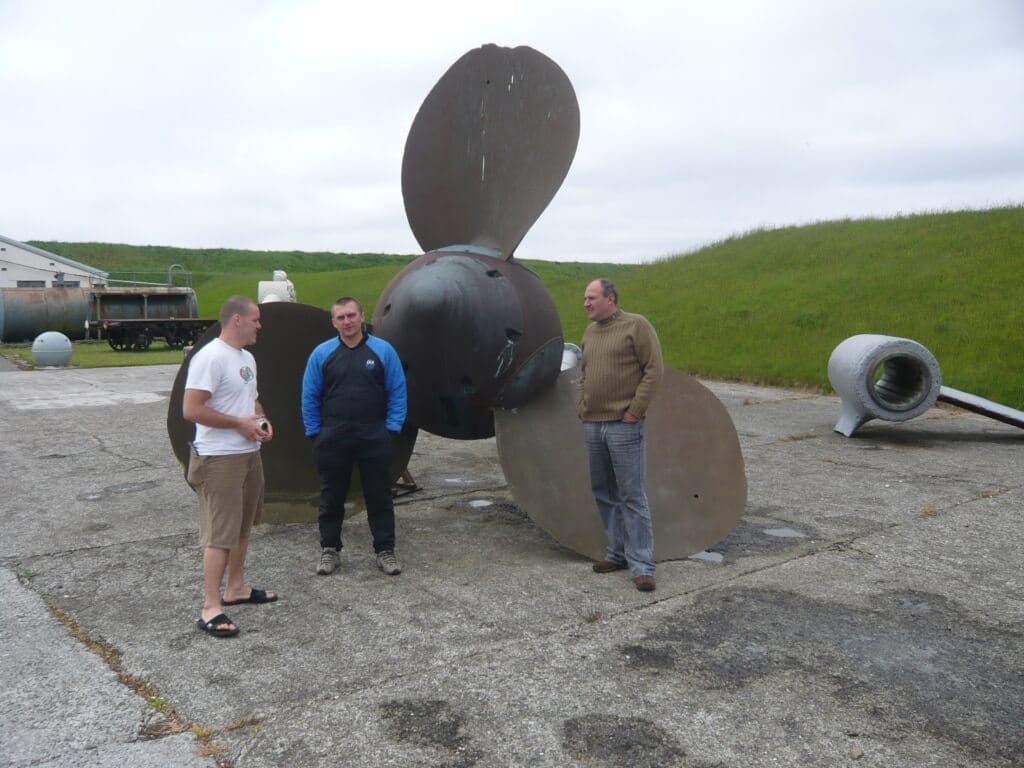
Detailed description of wrecks in part II Skapa Flow wrecks II








